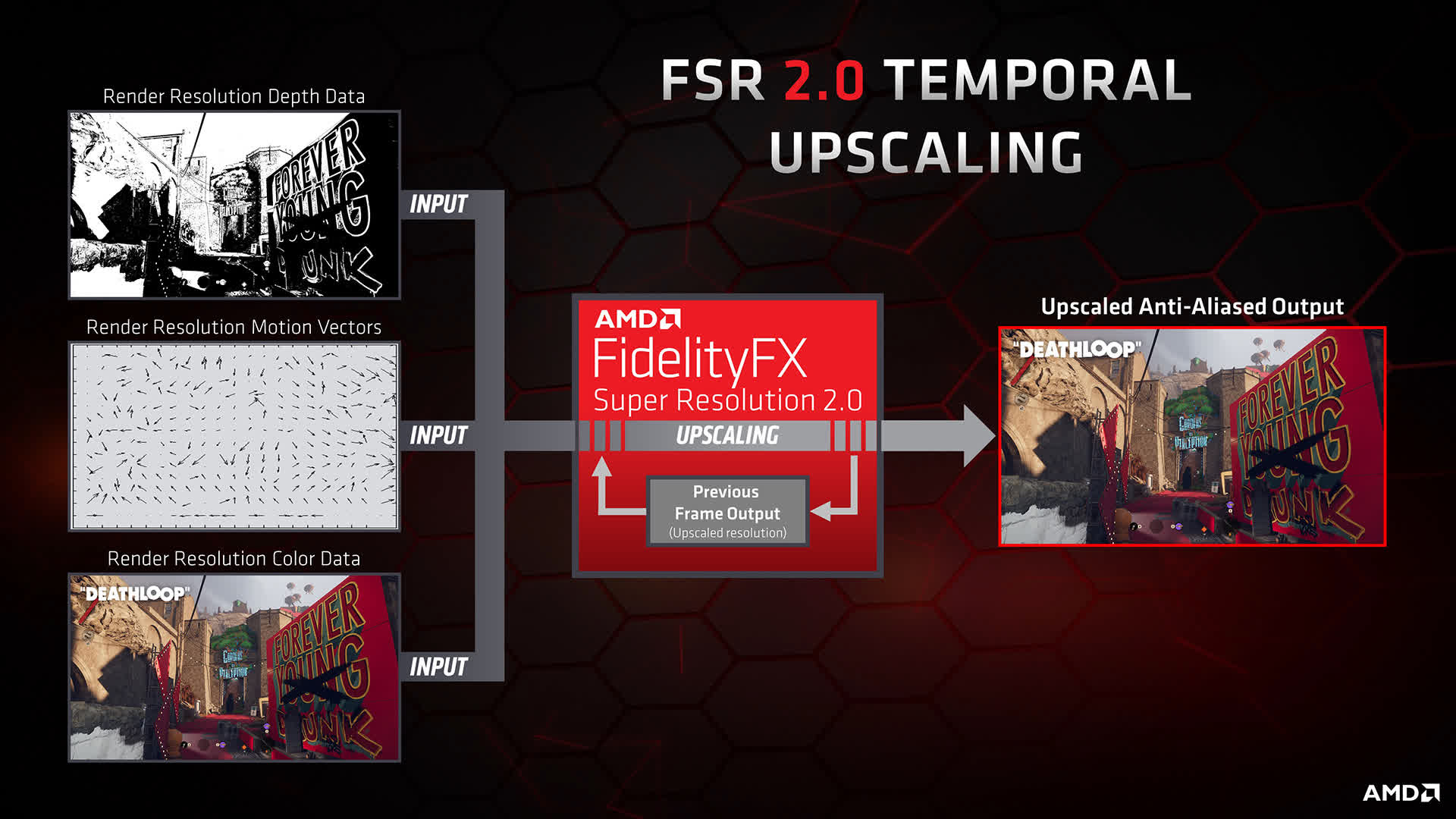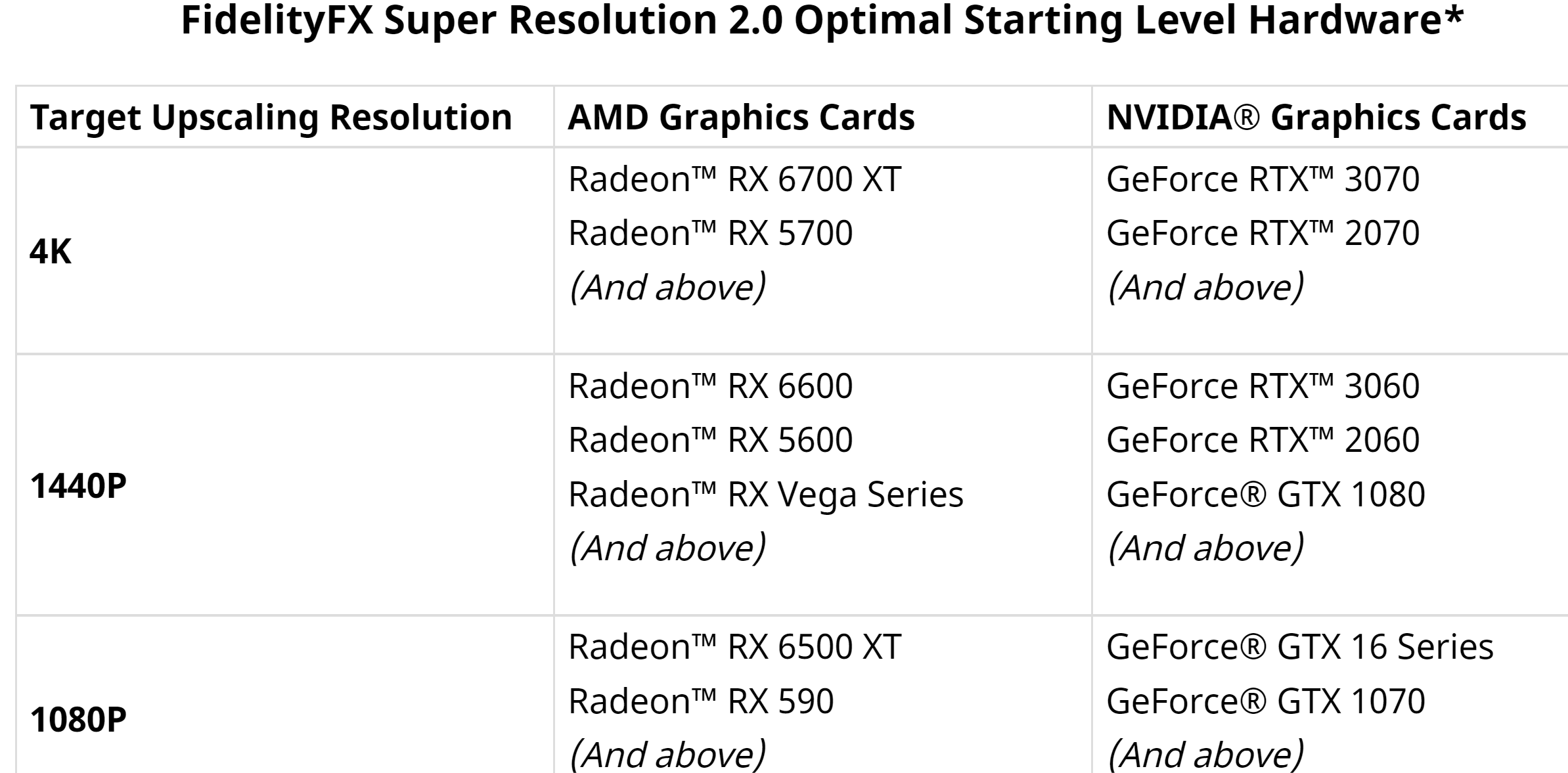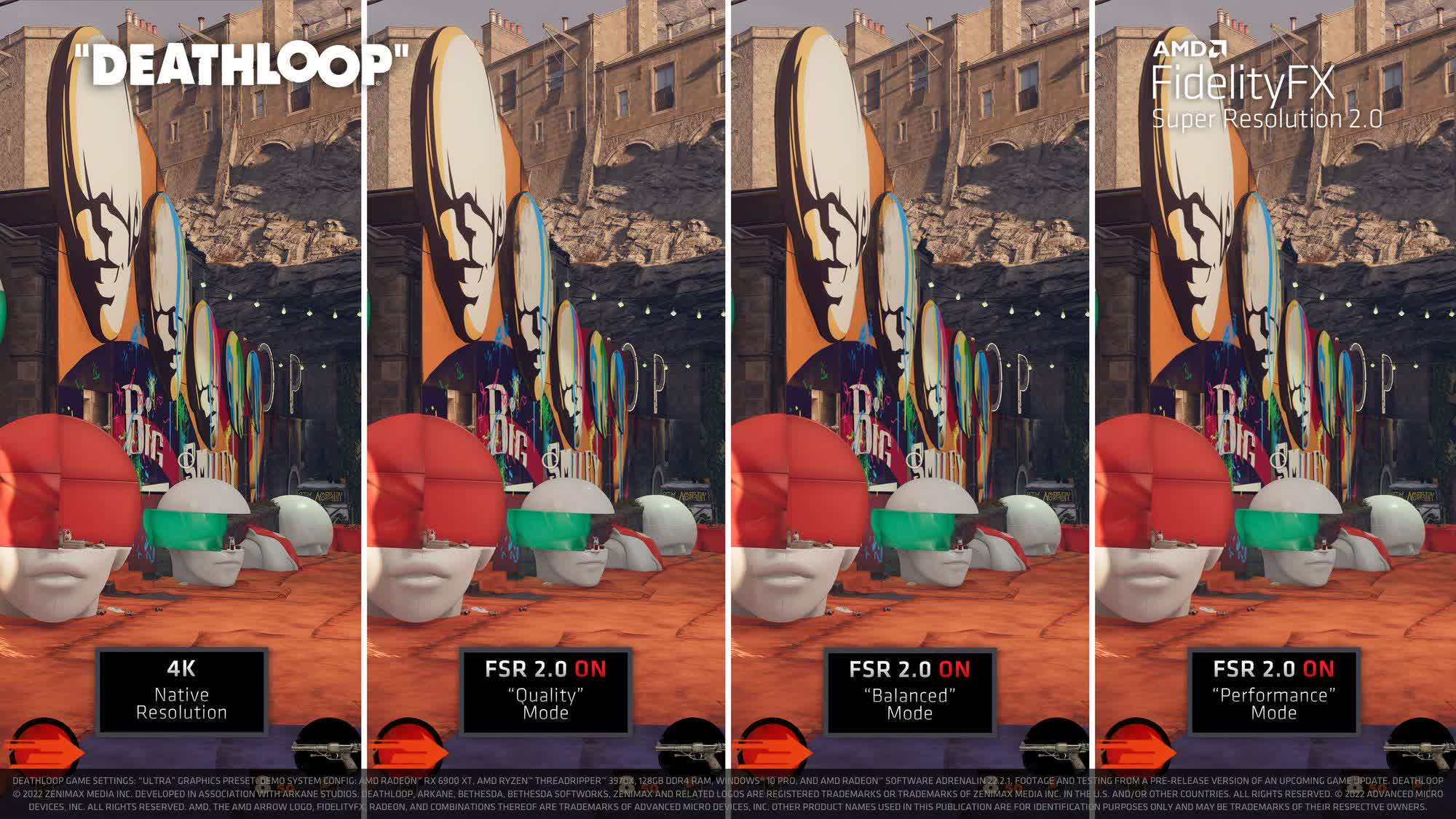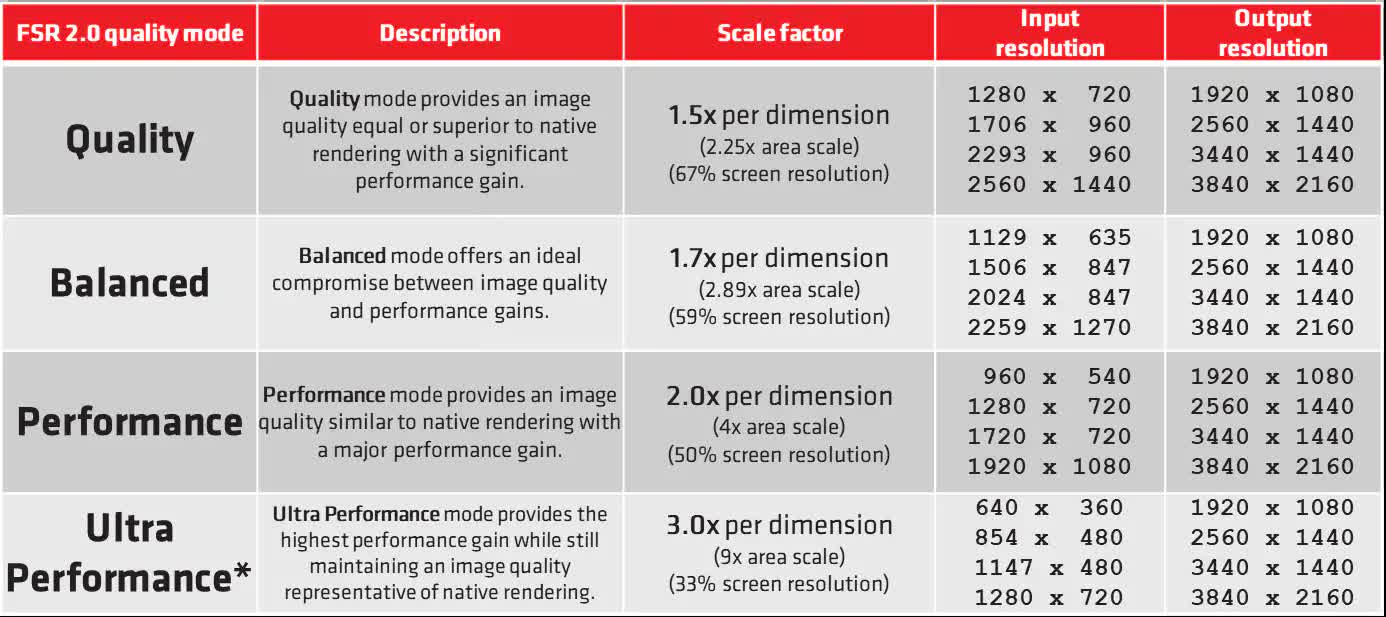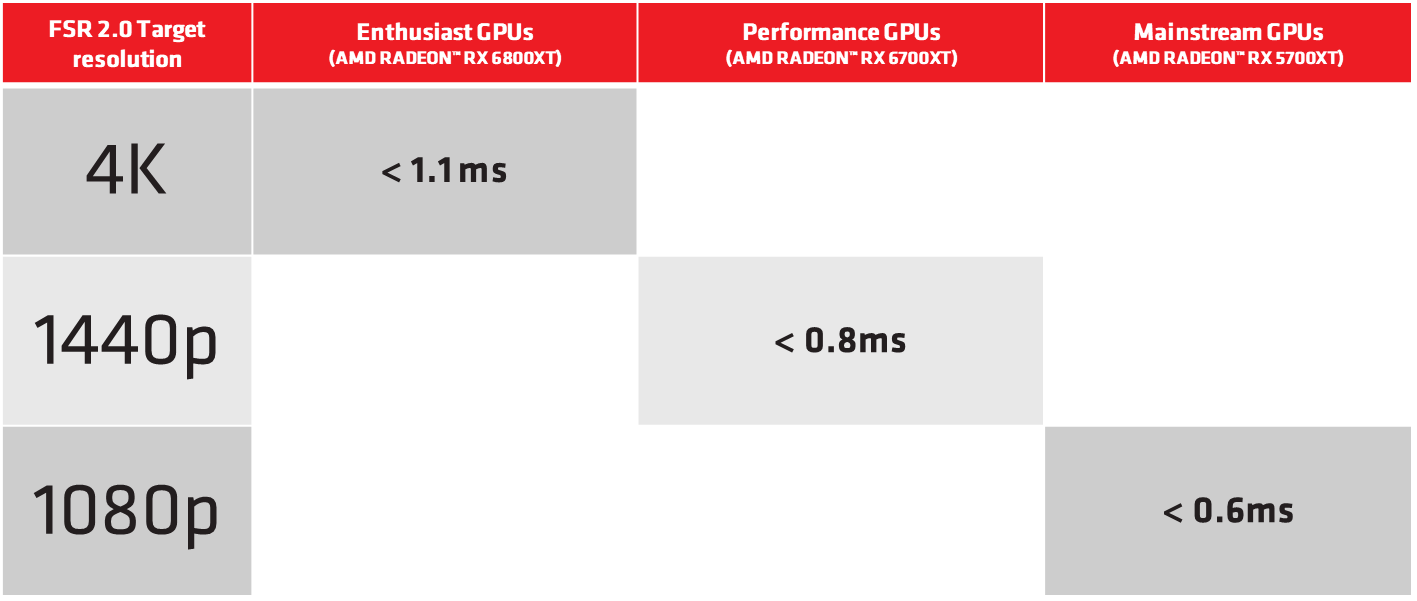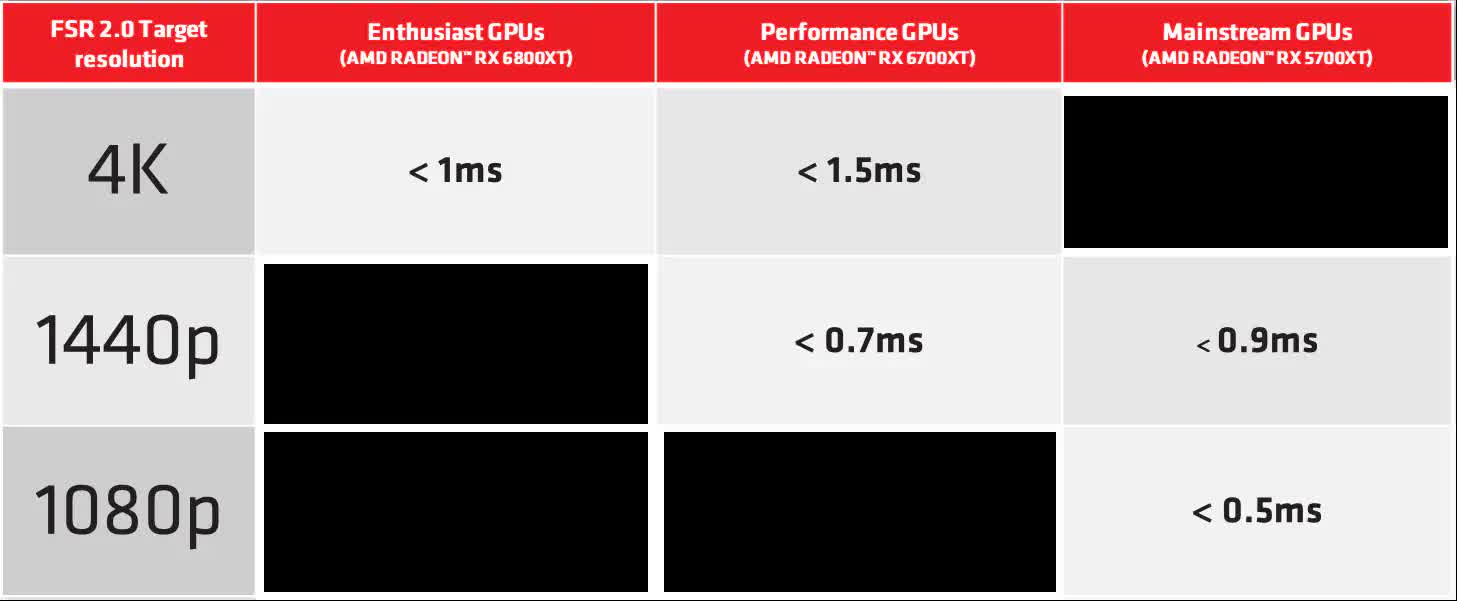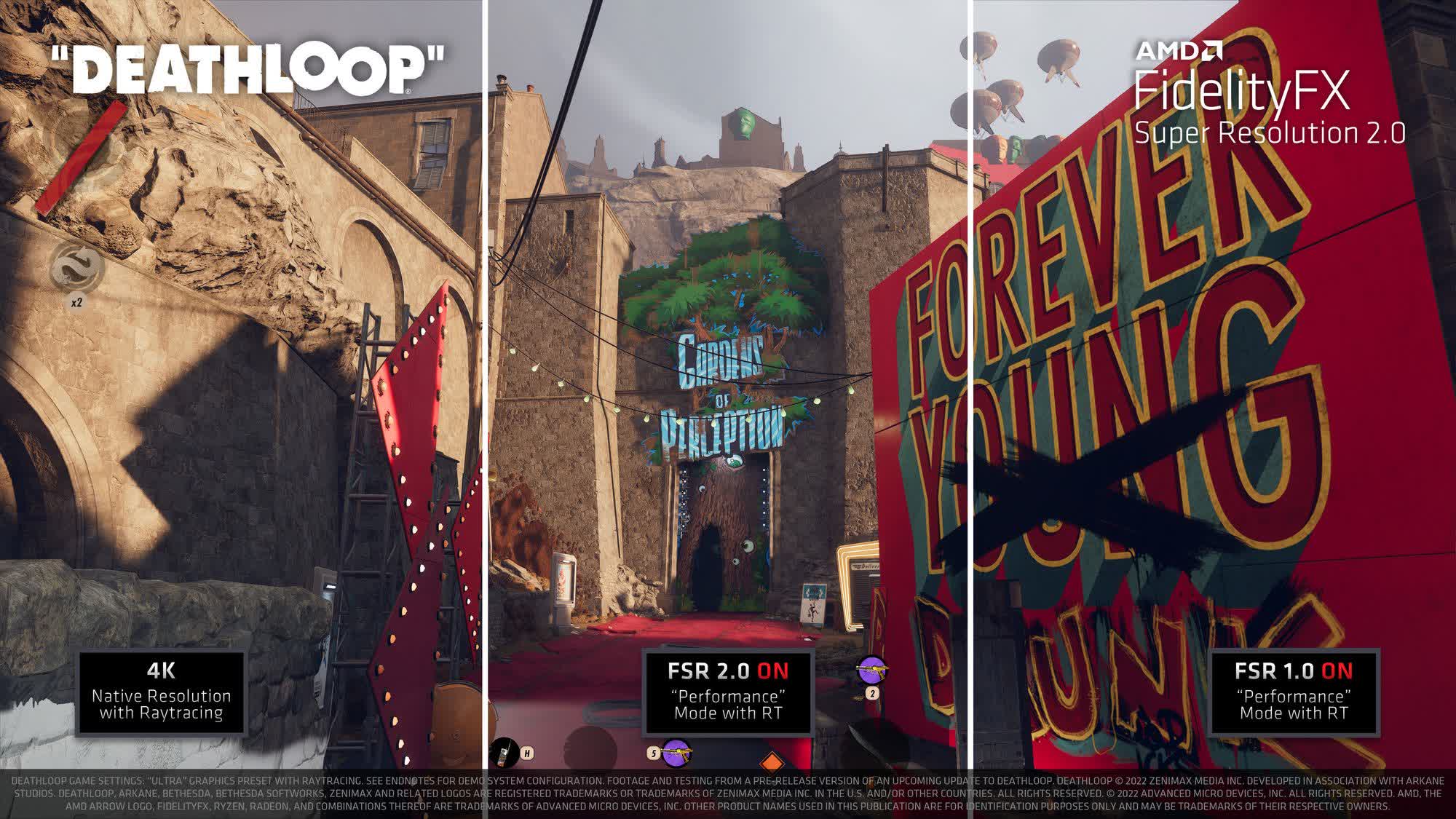
Something to look forward to: AMD lifted the lid on its next generation of upscaling technology at GDC 2022. As we reported last week, FSR 2.0 will be a temporal upscaling solution, which differs significantly from FSR 1.0, a spatial solution. That makes it closer to Nvidia’s DLSS and Intel’s upcoming Xess solutions and should offer improved visual fidelity compared to FSR 1.0.
After talking about the new version of its FidelityFX Super Resolution (FSR) last week, AMD has now revealed more details on FSR 2.0, including its support for the Xbox consoles and Nvidia graphics cards.
In an extensive post detailing FSR 2.0, AMD revealed that the technology would be fully supported on the Xbox and available in Xbox Game Development Kits for implementation in games. The original version was used in a handful of Xbox titles, including the Myst remake.
As FSR 2.0 doesn’t rely on machine learning, it works on a range of graphics cards, though AMD notes that it will be more demanding than a spatial upscaling solution like FSR 1.0, meaning you’ll need a beefy GPU to get the most out of it—especially when upscaling to 4K. AMD provided a list of recommendations that includes both its Radeon cards and those from rival Nvidia.
Another change in FSR 2.0 is that it offers different quality modes for getting the balance between image and performance just right. The highest setting is now Quality mode, alongside Balanced and Performance. There’s also one optional mode, Ultra Performance, for developers to use if they desire.
AMD also broke down each mode’s details, including the scale factor and the input/output resolutions.
FSR 2.0 is incredibly fast, with all of AMD’s various setup and resolution examples coming in at under 1.5ms for the time it takes to perform its magic.
FSR Quality Mode (Includes auto-exposure, no sharpening).
FSR 2.0 Performance Mode (Includes auto-exposure, no sharpening).
Another difference between FSR 2.0 and FSR 1.0 is that the former does require implementation by game developers. It can take as little as a few days to add to a title that already has DLSS, and there will be a plugin for games running on Unreal Engine 4 and Unreal Engine 5.
It will be easier to implement FSR 2.0 in games that already have a temporal upscaling rendering path. Any titles that don’t have motion vectors or support for decoupled display and render resolutions could require four or more weeks of work to add FSR 2.0.
AMD has confirmed that FSR 2.0 will debut in Deathloop as soon as the tech is ready and Forspoken, which launches in October. Both games are PS5 and PC exclusives.
